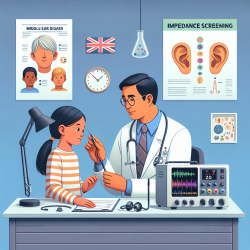Introduction
In recent years, the significance of Diversity, Equity, and Inclusion (DEI) has gained momentum in academic health centers (AHCs). The research article "Diversity, Equity, and Inclusion Efforts at a Departmental Level: Building a Committee as a Vehicle for Advancing Progress" provides a comprehensive model for forming a DEI Committee, a crucial step towards fostering an inclusive institutional climate. This blog will explore how practitioners can leverage this model to enhance their skills and contribute to systemic change.
The Importance of DEI in Academic Health Centers
Research consistently demonstrates that diverse environments bring a wealth of perspectives, enhancing productivity and innovation. In healthcare, a diverse workforce positively impacts patient care and outcomes. However, achieving a truly inclusive climate requires intentional efforts to address systemic barriers and biases.
Creating a DEI Committee: A Six-Step Model
The research outlines a six-step model for forming a DEI Committee, which serves as a vehicle for change:
- Leadership Support: Secure commitment from departmental leadership to prioritize DEI as core values.
- Recruitment and Membership: Initiate an open call for membership, ensuring diverse representation across roles and sectors.
- Purpose and Guidelines: Establish a clear mission and guidelines for respectful discourse and collaboration.
- Long and Short-Term Goals: Set bold, actionable goals that align with the committee's mission.
- Communication and Collaboration: Foster visibility and collaboration across departments to integrate DEI into the organizational culture.
- Ongoing Evaluation: Implement regular assessments to track progress and identify areas for improvement.
Lessons Learned and Practical Applications
The research highlights several lessons learned, including the importance of securing leadership support, fostering open communication, and addressing barriers to participation. Practitioners can apply these insights to their own departments, tailoring the model to fit their unique needs and contexts.
Encouraging Further Research and Implementation
While the research provides a robust framework for DEI initiatives, ongoing evaluation and adaptation are essential. Practitioners are encouraged to conduct further research to refine their approaches and share findings with the broader academic community. This collaborative effort will drive sustained progress towards a more equitable and inclusive healthcare system.
To read the original research paper, please follow this link: Diversity, Equity, and Inclusion Efforts at a Departmental Level: Building a Committee as a Vehicle for Advancing Progress.










